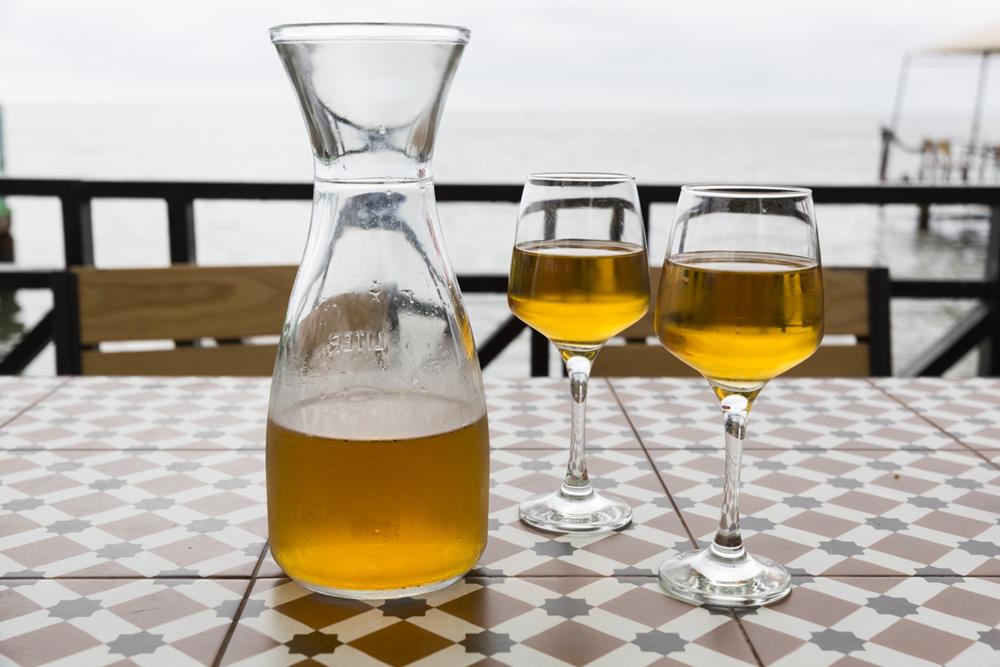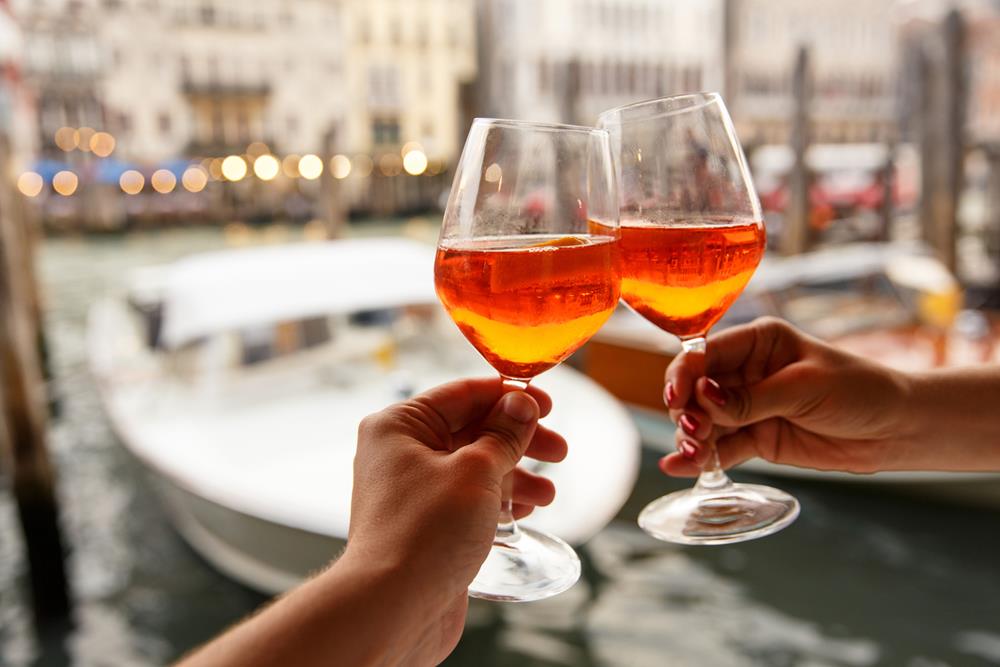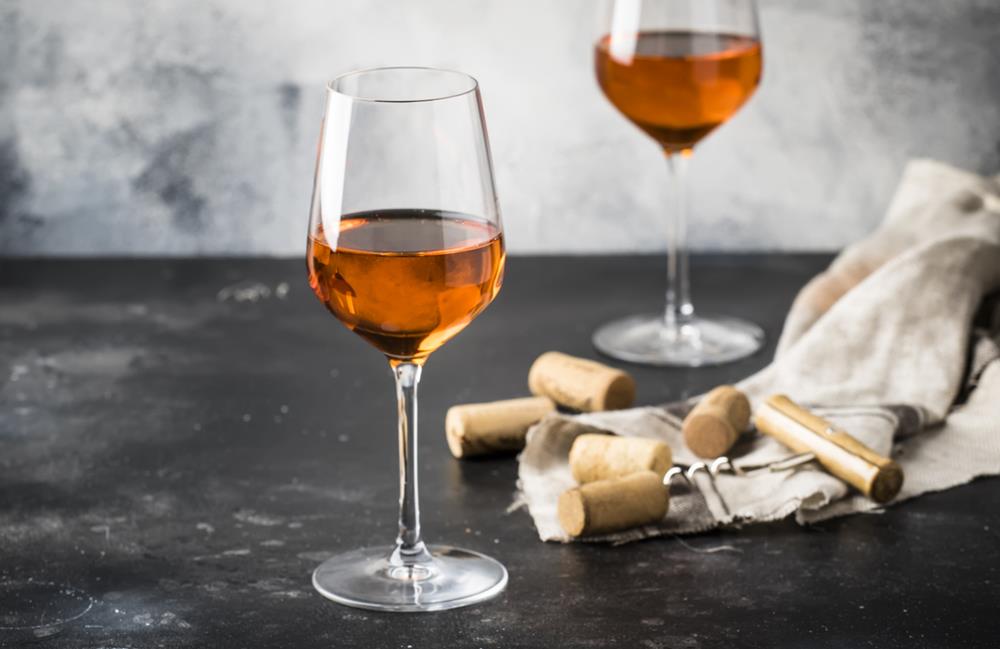Orange wine a remarkable alcoholic drink unlike any other, as it offers a harmonious blend of intriguing taste profiles and captivating flavors that truly enchant the palate. While it may not yet command the same level of popularity as its red or white counterparts, orange wine has slowly but surely garnered a devoted following.
In this extensive blog post, we delve into the ancient roots of orange wine and trace its fascinating evolution. We unravel the meticulously intricate art of crafting orange wine and explore the various techniques and processes that contribute to its uniqueness.
The Origins of Orange Wine
The fascinating origins of orange wine are deeply intertwined with Eastern Europe, particularly the Republic of Georgia. Located in the Caucasus region, Georgia has produced a significant quantity of orange wine and has become synonymous with this winemaking style.
For over 8,000 years, Georgian winemakers have used clay pots known as “qvevri” to craft their wines. The very first orange wine was believed to be created using this traditional method, with records dating back to the 6th century. Since then, this ancient winemaking practice has spread across the globe, captivating wine enthusiasts worldwide with its unique characteristics.
The Intriguing Winemaking Process
Orange wine is crafted using white grapes that are macerated with their skins and seeds for an extended period. This meticulous process imparts a deep color, robust aroma, and full-bodied texture to the wine.
The duration of the maceration period directly influences the intensity of the wine’s hue, creating a spectrum of shades. Following maceration, the wine undergoes fermentation in barrels, with some winemakers choosing to age it for several years. Orange wine is often cherished in its naturally cloudy and unfiltered state, enhancing its distinctive character and allure.
Unparalleled Taste and Flavor
Its remarkable taste and flavor profile sets orange wine apart from others. Its complex and bold aroma evokes notes of dried fruits, flowers, and spices. The flavor is intense and full-bodied, accompanied by a unique tannic structure reminiscent of many red wines.
The taste is dry, offering a rich and delectable texture akin to honey. The specific flavor characteristics vary depending on factors such as grape variety, winemaking techniques, and regional influences, rendering each bottle a truly one-of-a-kind experience.
Orange Wine’s Rising Popularity
In recent years, orange wine has experienced a surge in popularity among wine enthusiasts. This has primarily been driven by a growing interest in natural wines crafted without chemical additives.
As a prime example, orange wine is celebrated for its natural winemaking process, appealing to connoisseurs and sustainable wine producers. Moreover, the power of social media cannot be underestimated, as platforms like Instagram and wine bloggers have played a significant role in spreading awareness and appreciation for orange wine’s unique flavor and allure, catapulting its popularity to new heights.
Other Interesting Facts About Orange Wine
Orange wine has a unique history and production process that sets it apart from other types of wine. Here are some interesting facts about orange wine that you might not know.
- Ancient Origins: Orange wine is not a modern invention. It dates back thousands of years, with evidence of its production in Georgia as early as 6000 BC. This makes it one of the oldest styles of wine in the world.
- Natural Winemaking: Orange wine is often made using natural winemaking techniques. This means minimal intervention, with no added yeasts, sugars, or chemicals, making it a popular choice for those looking for more natural products.
- Unique Fermentation: The distinctive color and flavor of orange wine come from its unique fermentation process. The juice of white grapes is fermented with the skins and seeds, similar to red wine production, which gives it more tannins and a richer texture.
- Versatile Pairing: Orange wine pairs well with a variety of foods. Its complex flavors and acidity make it a great match for diverse dishes, from spicy foods to hearty meats and aged cheeses.
- Variety of Grapes: Many different grape varieties can be used to make orange wine. Some of the popular ones include Pinot Gris, Sauvignon Blanc, and Chardonnay, each contributing its own unique characteristics to the wine.
- Growing Popularity: While it was once relatively unknown, orange wine has been growing in popularity in recent years. Wine enthusiasts and sommeliers are increasingly recommending it for its unique taste and historical significance.
- Distinctive Flavor Profile: Orange wine often has a distinctive flavor profile that includes notes of dried fruit, nuts, and spices. It can be quite different from what people expect from white or red wines, offering a new tasting experience.
- Age-Worthy: Like red wines, some orange wines can age well. The tannins and structure provided by the skin contact can help them develop more complex flavors over time.
- Handcrafted: Many orange wines are produced by small, artisanal wineries. These producers often emphasize traditional methods and sustainability in their winemaking practices.
- Global Production: While Georgia is known for its ancient tradition of making orange wine, many other countries now produce it, including Italy, Slovenia, and the United States. This global production adds to the diversity and availability of orange wine in the market.
Conclusion
Orange wine is an utterly unique and captivating drink that offers a unique experience for your palate. Its deep amber hue, distinctive aroma, and velvety texture stand out among traditional wines.
Whether you are exploring the world of orange wine or consider yourself a seasoned connoisseur, this exceptional beverage will undoubtedly leave a lasting impression. Its multifaceted character and allure make it a true treasure for wine lovers seeking new and exciting discoveries.
Additional Suggestions
- The History and Origins of Orange Wine are filled with fascinating stories that led to the creation of an underrated but sophisticated alcoholic drink.



